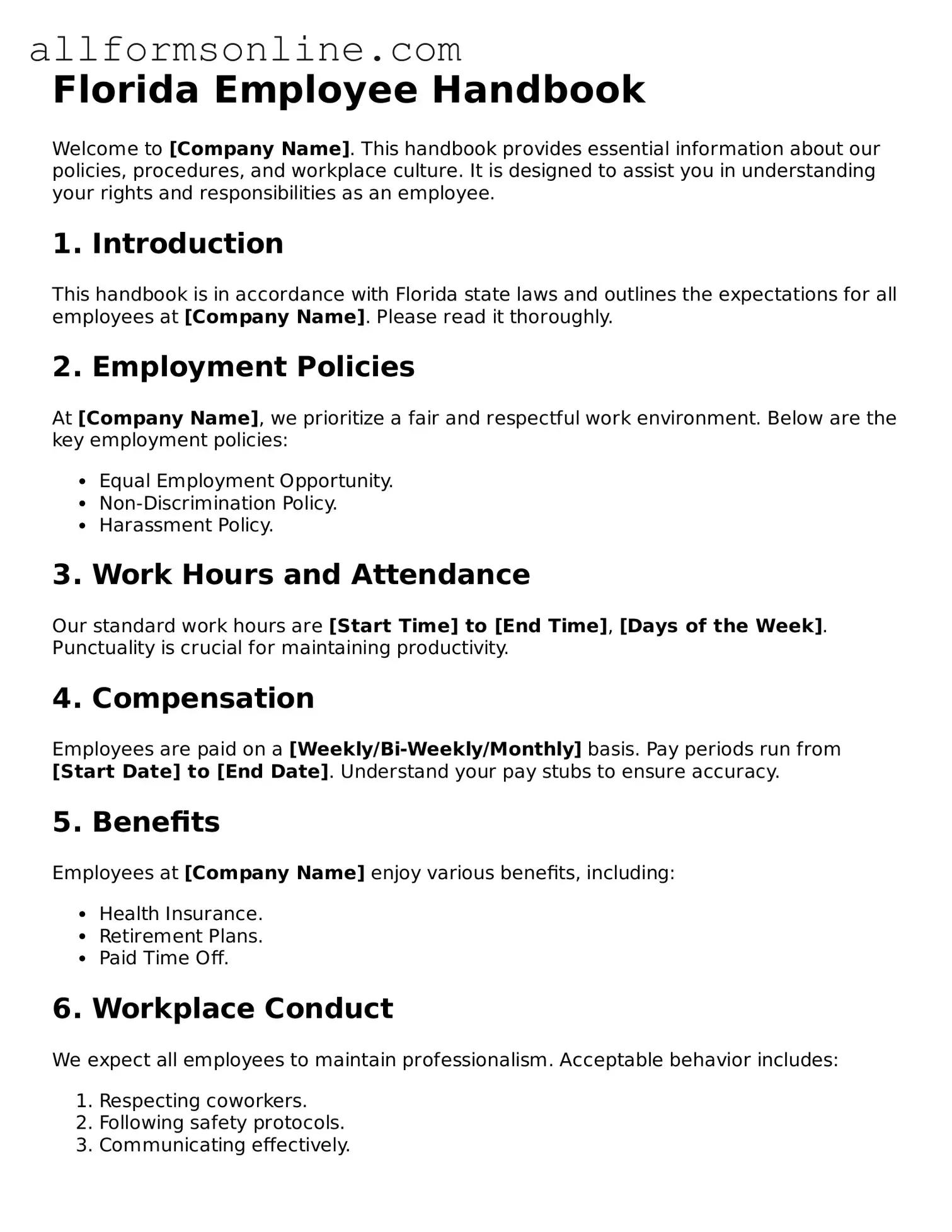What is the Florida Employee Handbook form?
The Florida Employee Handbook form is a document that outlines the policies, procedures, and expectations of an employer for their employees. It serves as a guide to help employees understand their rights and responsibilities within the workplace. This handbook can cover various topics, including workplace conduct, benefits, and safety procedures.
Why is an Employee Handbook important?
An Employee Handbook is important because it sets clear guidelines for both employers and employees. It helps prevent misunderstandings by providing a reference point for workplace policies. Additionally, it can protect the employer from legal issues by documenting the rules and procedures that employees are expected to follow.
Who should receive a copy of the Employee Handbook?
All employees should receive a copy of the Employee Handbook. This includes full-time, part-time, and temporary employees. Providing a handbook ensures that everyone is aware of the company's policies and procedures, promoting a consistent understanding across the organization.
How often should the Employee Handbook be updated?
The Employee Handbook should be reviewed and updated regularly, ideally at least once a year. Changes in laws, company policies, or workplace culture can necessitate updates. Keeping the handbook current ensures that employees have the most accurate information regarding their rights and responsibilities.
Can an Employee Handbook be legally binding?
An Employee Handbook can have legal implications, but it is not automatically a legally binding contract. It is essential to include disclaimers stating that the handbook is not a contract and that employment is at-will. This means that either the employer or employee can terminate employment at any time for any lawful reason.
What topics should be included in the Employee Handbook?
Key topics to include in the Employee Handbook are workplace policies, employee benefits, attendance and leave policies, anti-discrimination policies, disciplinary procedures, and safety protocols. Including these topics helps create a comprehensive guide for employees.
How should the Employee Handbook be distributed?
The Employee Handbook can be distributed in various ways. It can be provided in printed form during orientation or made available electronically through the company’s intranet. Regardless of the method, employees should acknowledge receipt of the handbook, confirming they understand its contents.
What should an employee do if they have questions about the Employee Handbook?
If an employee has questions about the Employee Handbook, they should reach out to their supervisor or the Human Resources department. It is important for employees to seek clarification on any policies or procedures they do not understand to ensure compliance and avoid issues in the workplace.
Is it necessary to have a lawyer review the Employee Handbook?
While it is not strictly necessary, having a lawyer review the Employee Handbook is highly recommended. A legal professional can ensure that the handbook complies with current laws and regulations, minimizing the risk of potential legal issues for the employer.
